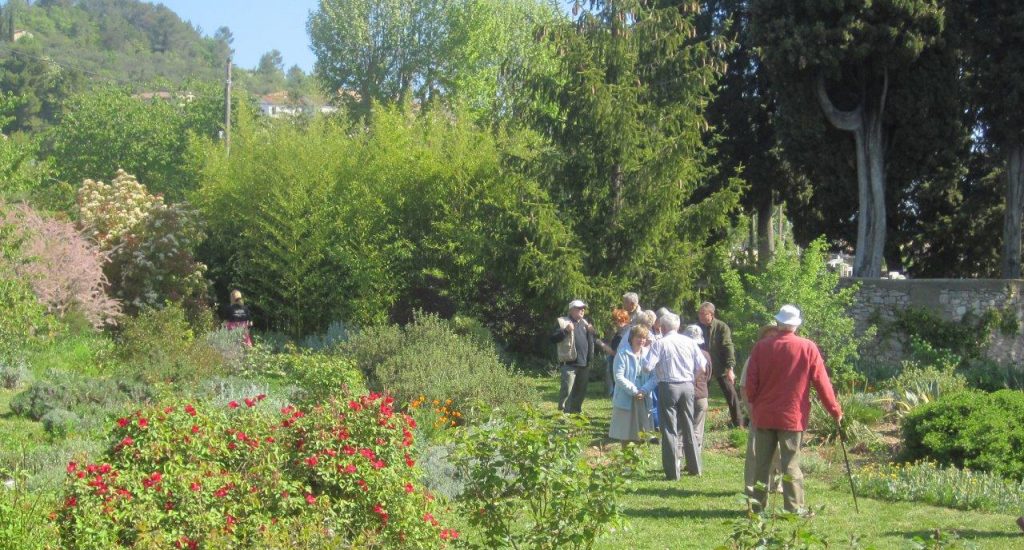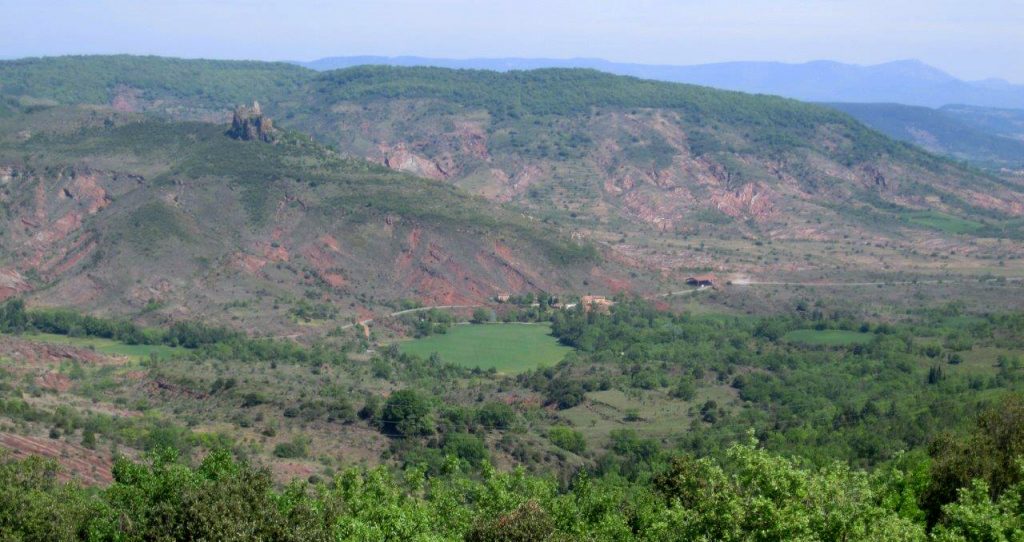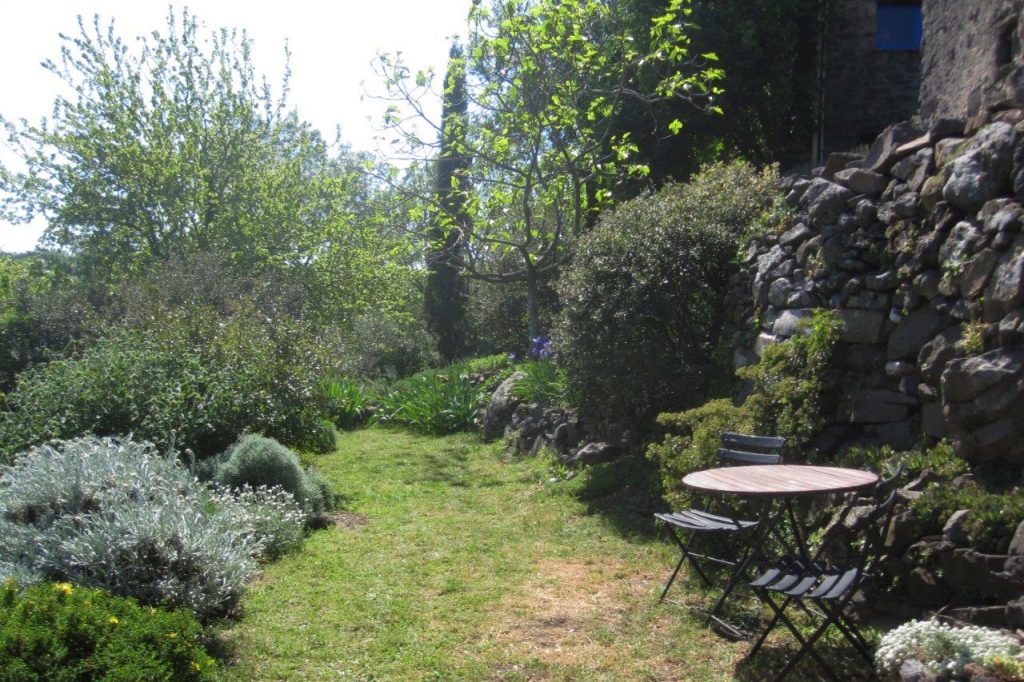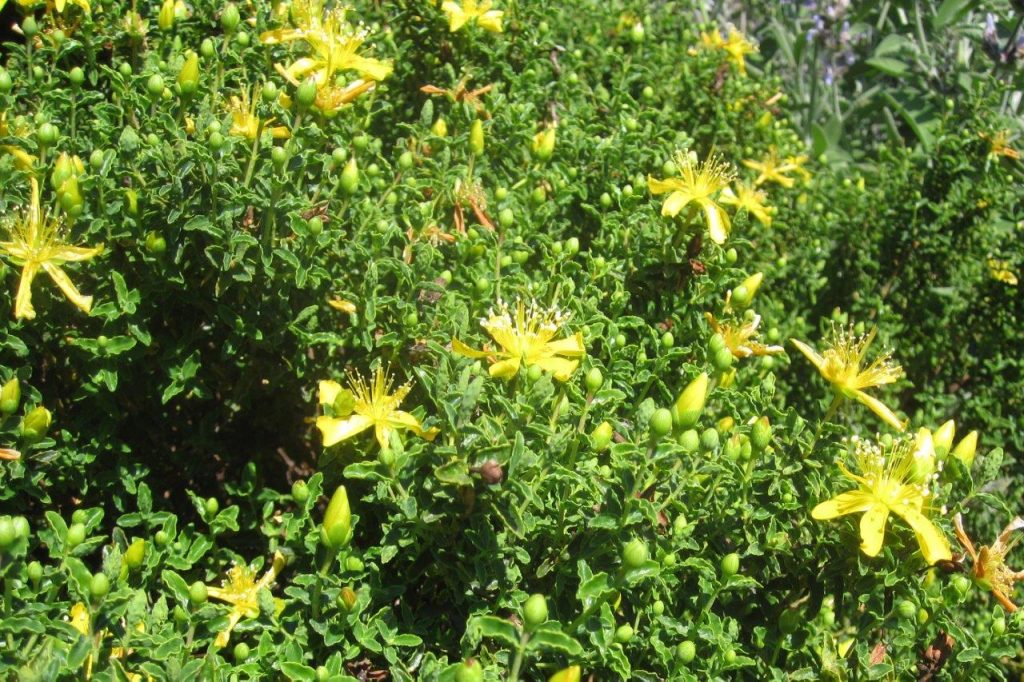April / avril 2011 – Visits to members’ gardens
Click on the images to enlarge them / Cliquez sur les images pour les agrandir
Jenny’s garden
Jenny’s garden was a wonderful contrast to Roquebrun; flat, walled and curvaceous with a backdrop of cypress to the north-east, terraced limestone hills to the north-west and an open vista to the south-west. The house, with a terrace running its length, looks out over the garden. In this garden the Orb valley soil is heavy clay except for a newly created raised bed.
It is immediately obvious that Jenny loves plants. The variety is stunning, with lots of roses in bloom including Rosa chinensis ‘Sanguinea’ and starting to climb vigorously up an ash tree, Rosa ‘Mme Alfred Carrière’. There is a spiky bed with Agave americano, Kniphofia sarmentosa and K. ‘Geant’, Yucca alifolia and a number of salvias and euphorbias – in fact, on the list Jenny gave us, there are thirty nine plants in this bed.
There are eleven beds in all, each with a different emphasis and each with a large variety of plants, all listed. Jenny’s list started with questions she hoped members would have answers for and ended with the plants that had failed, mostly, she thinks, because of wet clay in the cold of winter.
Jenny reproduces many plants by taking cuttings and her fear is that there will come a day when there will be no room to plant any more.
Read more about Jenny’s garden in the Directory of Members’ Gardens.
Andrew and Margaret’s garden
Andrew and Margaret’s garden, also on a steep slope, was different again. From the balcony of the house there are breathtaking views of Lac du Salagou with two extinct volcanoes and marvelous red soil contrasting with delicate spring green foliage.
Against the north wall of the house is a small rockery created on a natural rock outcrop. There are sedums which are said to need full sun but are doing better than the same ones planted on the sunny terraces below. Sedum palmeri was particularly attractive.
The first terrace, swept by the ‘Tramontane’, gives a first glimpse of the garden below. The plants here have to survive the wind, the Cistus x pulverulentus and C. x corbariensis were looking particularly healthy. There is a Ficus pumila (the climbing fig) starting to climb either side of an arch. This terrace has a mown grass path, and on the lower terraces geotextile and wood chips have been laid.
The south-facing terraces below are sheltered from the wind and a micro-climate enables the plants to thrive. In only five years Andrew and Margaret have created terraces from a 20° slope making walls and filling in with earth, an impressive project. The fact that they only live there for part of the year adds to my admiration.
The earth is sandy and unlike Jenny’s heavy water-retaining clay, the water drains away instantly. Here are a multitude of drought-tolerant plants: Nepeta x fassenii ‘Six Hills Giant’, a number of hardy geraniums, wallflowers, madonna lilies, rosemary, cistus, lavender and phlomis. Below the planted terraces are wooded terraces with a path between holm oaks leading to a finalast open grassy terrace. Andrew said the plant he likes the best is his Salvia officinalis, though there was some discussion as to whether it really is officinalis as the leaves are pinnate. It was mingling attractively with a Hypericum balearicum that I particularly liked.
Both gardens left me in admiration of the vision that had gone into creating them, with ideas for new plantings and a great sense of joy.
Text: Katharine Fedden
Photos: Christine Daniels and Andrew Polmear
![]()









